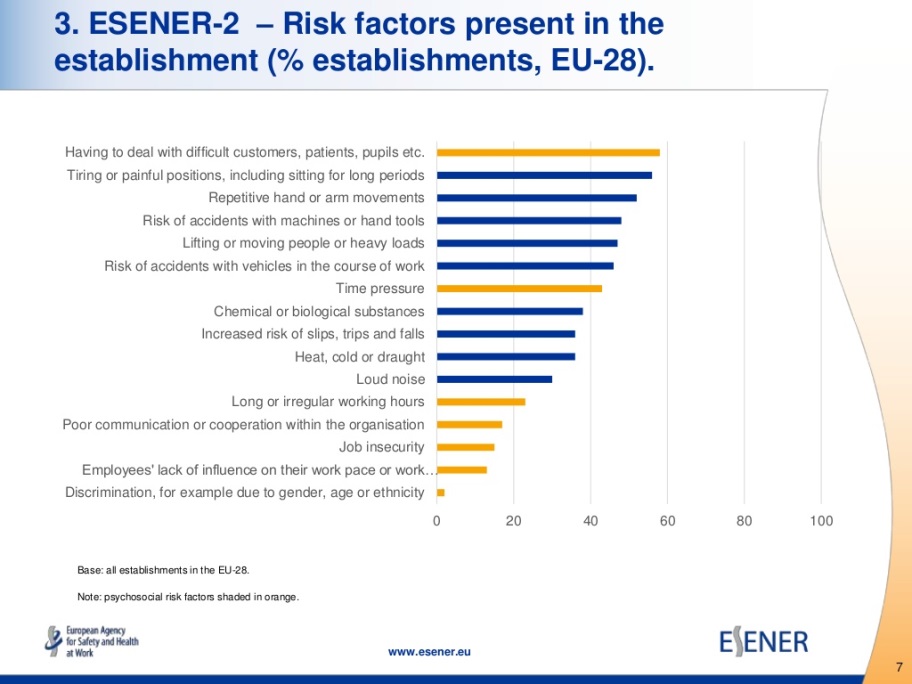50,000 companies of all sizes were surveyed in the 2nd EU Survey of Enterprises on New and Emerging Risks (EU Agency for Safety and Health at Work, 2015).
The survey covers 36 countries (EU-28 plus neighbouring countries including Norway, Serbia, Switzerland and Turkey) and focuses on main drivers and barriers to the success of health and wellbeing programmes.
Findings shed light into the evolving definition of risk, with impact of stress raising on top of employers’ concerns.
The most frequently identified risk factors for companies across sectors:
- Dealing with difficult customers, pupils or patients (58%)
- Tiring or painful position including sitting for long periods (56%)
- Repetitive hand or arm movements (52%)
Key findings further include:
- More than 20% of surveyed organisations in EU-28 indicate that over a quarter of their workforce is aged over 55, in particular in Sweden (36%), Latvia (32%) and Estonia (30%)
- 90% of organisations in the EU-28 regularly carry out risk assessment and 81% of those involve their employees in the design and implementation of follow-up measures
What motivates most enterprises to manage health and wellbeing at work:
- Fulfilling legal obligations
- Meeting expectations from employees
- Maintaining the organisation’s reputation
